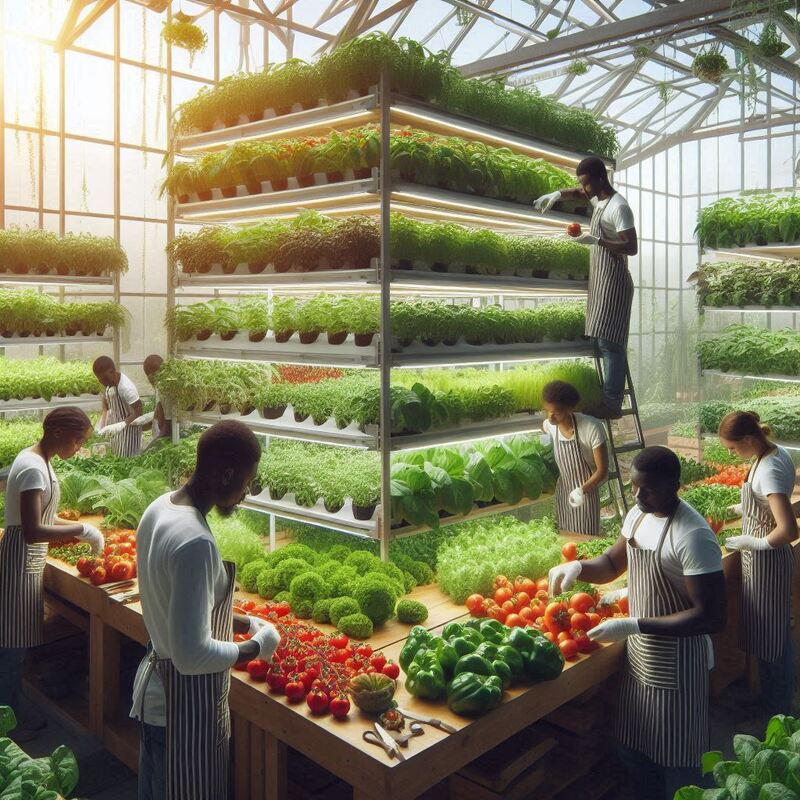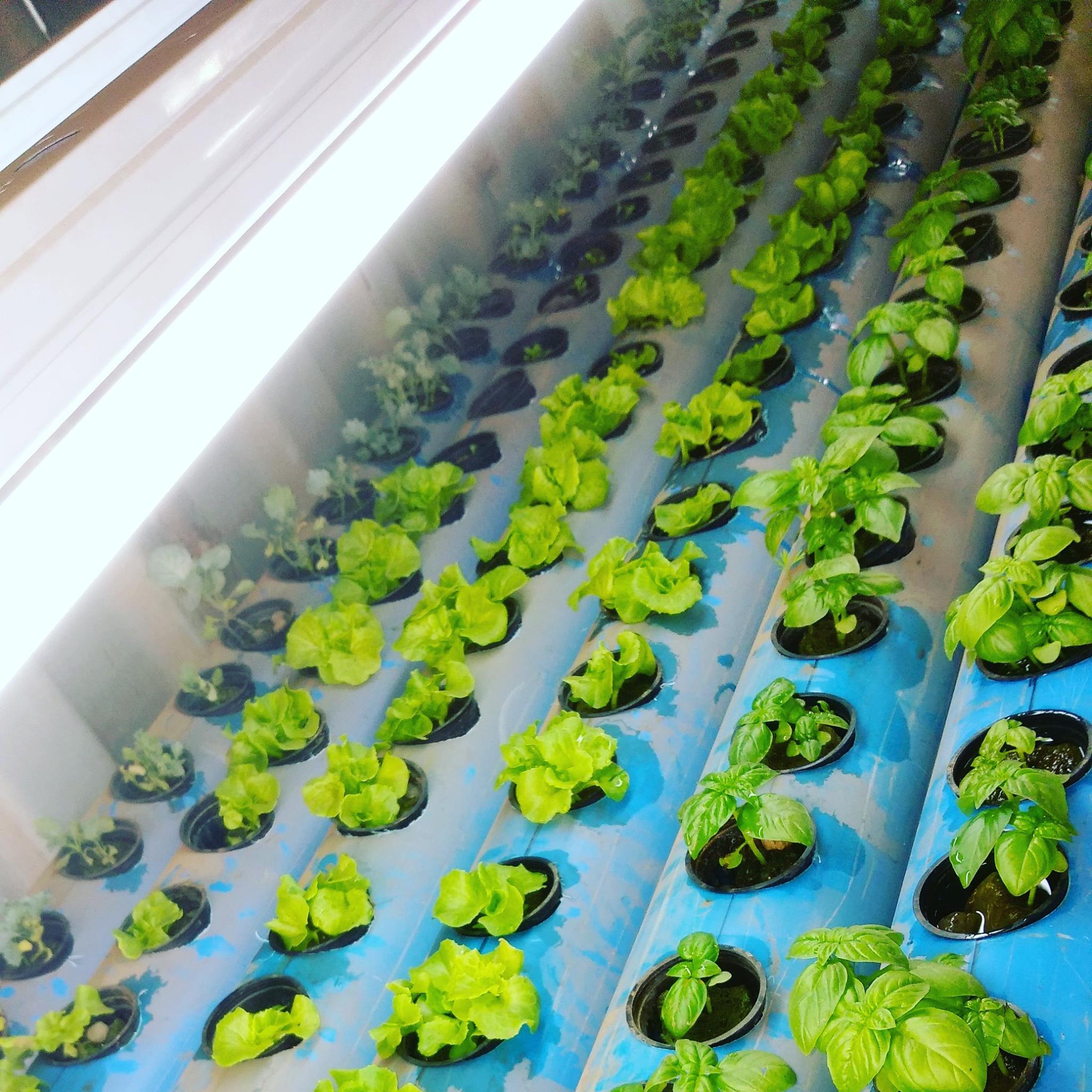
In a rapidly urbanizing world, the future of farming is taking a remarkable turn skyward, and Africa is poised to lead this agricultural revolution. Vertical farming, a cutting-edge approach to food production, is set to redefine the agribusiness landscape, offering sustainable solutions to some of the continent’s most pressing challenges. This article delves into the transformative potential of vertical farming in Africa, showcasing real-life examples from Nigeria and other parts of the continent, and providing insights that will compel readers to invest in this groundbreaking innovation.
What is Vertical Farming?
Vertical farming involves cultivating crops in stacked layers, often integrated into other structures like skyscrapers or shipping containers. This method uses controlled-environment agriculture technology, where all environmental factors such as light, humidity, and temperature are regulated. Hydroponics, aeroponics, and aquaponics are some of the techniques employed in vertical farming, allowing for the growth of crops without soil.
The Need for Vertical Farming in Africa
Africa faces unique agricultural challenges, including unpredictable weather patterns, soil degradation, and water scarcity. Traditional farming methods are becoming increasingly unsustainable, necessitating innovative solutions. Vertical farming addresses these issues by:
1. Maximizing Space Utilization: Vertical farms can be established in urban areas where land is scarce, reducing the pressure on rural farmlands.
2. Enhancing Crop Yields: With controlled environments, crops can be grown year-round, leading to multiple harvests and higher yields.
3. Reducing Water Usage: Advanced irrigation systems in vertical farming use up to 95% less water compared to traditional farming.
4. Minimizing Transportation Costs: Growing food closer to consumers in urban centers reduces transportation costs and carbon emissions.
Success Stories in Nigeria
1. Fresh Direct Nigeria

Fresh Direct Nigeria, founded by Angel Adelaja, is revolutionizing urban farming with containerized vertical farms. These farms use recycled shipping containers to grow vegetables such as spinach, lettuce, and kale. The company’s approach not only conserves water but also creates employment opportunities for urban youth, addressing both food security and unemployment.
2. Soilless Farm Lab
Based in Lagos, Soilless Farm Lab is at the forefront of introducing hydroponic and vertical farming techniques to Nigerian agriculture. The farm produces a variety of crops including tomatoes, peppers, and leafy greens. Soilless Farm Lab also offers training and consulting services to help other farmers adopt vertical farming technologies, thereby spreading the benefits across the country.
3. H2O Farms
H2O Farms, located in Abuja, is another example of a successful vertical farming initiative in Nigeria. Specializing in hydroponic farming, H2O Farms grows a range of crops such as lettuce, herbs, and strawberries. The farm’s innovative use of technology ensures efficient water use and high crop yields, making it a model for sustainable urban agriculture in Nigeria.
Success Stories in Other Parts of Africa
1. Lettuce Grow, South Africa
Lettuce Grow, based in Johannesburg, is a pioneer in vertical farming in South Africa. Utilizing hydroponic systems, this startup produces high-quality lettuce and herbs in urban settings. The company’s innovative approach has significantly reduced water usage and increased crop yields, providing fresh produce to local markets and restaurants.
2. Kisumu Urban Apostles, Kenya
In Kisumu, Kenya, the Urban Apostles project is transforming abandoned buildings into vertical farms. This initiative focuses on producing nutritious vegetables for local communities while promoting sustainable urban development. The project has garnered support from local government and international organizations, showcasing the viability and impact of vertical farming.
The Economic Potential
Vertical farming presents a lucrative opportunity for agripreneurs in Africa. By reducing reliance on imported food and creating local supply chains, vertical farming can bolster food security and stimulate economic growth. Investors are increasingly recognizing the potential of this sector, with numerous startups receiving funding to expand their operations.
How to Get Started
For those interested in venturing into vertical farming, here are some essential steps:
- Research and Training: Understand the basics of vertical farming and the specific needs of your target market. Enroll in training programs and workshops to gain practical knowledge.
- Secure Funding: Explore funding options, including government grants, private investors, and crowdfunding platforms.
- Choose the Right Technology: Select the appropriate vertical farming system (hydroponics, aeroponics, etc.) based on your resources and crop preferences.
- Develop a Business Plan: Create a detailed business plan outlining your goals, target market, and financial projections.
- Start Small: Begin with a pilot project to test your system and processes before scaling up.
Conclusion
The future of farming is vertical, and Africa is uniquely positioned to benefit from this transformative approach. By embracing vertical farming, agripreneurs can address critical challenges, enhance food security, and drive economic growth. The success stories from Nigeria and across the continent serve as a testament to the potential of this innovation. Now is the time to invest in vertical farming and be part of Africa’s agricultural revolution.
Invest in the future. Invest in vertical farming. Your journey to transforming Africa’s agribusiness landscape starts today.

